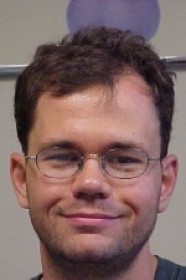
1:30 pm to 12:00 am
Event Location: GHC 4405
Bio: Dr. Geyer a Senior Lead Research Scientist at iRobot Corporation, and since joining iRobot in 2008 has lead efforts in perception on mobile platforms, especially in the area of computer vision. Prior to joining iRobot, he was a Project Scientist in the Robotics Institute at Carnegie Mellon University, where he participated in the DARPA Urban Challenge, as part of CMU’s Tartan Racing team, and lead several projects combining unmanned vehicles and perception. As a Post-doctoral Researcher at U.C. Berkeley, he led the development of an autonomous landing capability for an unmanned rotorcraft with Boeing Phantom Works under the DARPA Software Enabled Control program. He has authored over 30 publications in computer vision and autonomy, and he contributed seminal, widely cited work in omnidirectional vision during his graduate studies.. Dr. Geyer has served as reviewer for numerous conferences (CVPR, ICCV, ECCV, SIGGRAPH) and journals (PAMI, TRO), and co-chaired the 2005 and 2010 OMNIVIS Workshops.
Abstract: Today, most commercially available UGVs use teleoperation for control. Under teleoperation, users’ hands are tied up holding a hand-held controller to operate the UGV, and their attention is focused on what the robot is doing. In this talk, I will describe iRobot’s work on an alternative to teleoperation called Heads-up, Hands-free Operation, which allows an operator to control a UGV using operator following behaviors and a gesture interface. We explore whether Heads-up, Hands-free Operation is an improvement over teleoperation. In a study of 30 participants, we found that when operators used these modes of interaction, they performed missions faster, they could recall their surroundings better, and they had a lower cognitive load than they did when they teleoperated the robot. Heads-up, Hands-free Operation is enabled through the use of embedded computer vision technologies.
